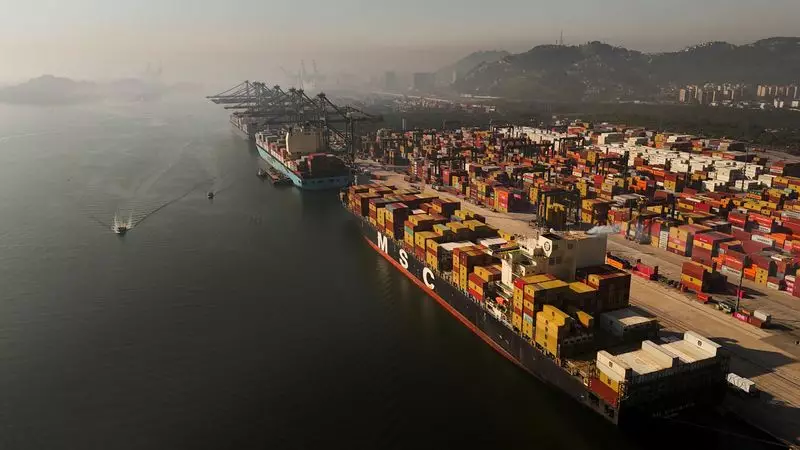The global economy is often shaped by the intricacies of international trade relations, particularly when tensions escalate into incidents resembling a trade war. Recent analysis by UBS reveals a potential timeline for a forthcoming trade conflict, outlining its various phases and the associated economic implications. Delving into this analysis offers insights into both the mechanics of such a confrontation and the responses it elicits globally.
UBS introduces the concept of a “tweet phase,” a scenario already unfolding where policy discussions are being propelled by public declarations and social media engagements. In this era of instantaneous communication, leaders can articulate their positions swiftly, influencing both public perception and negotiating dynamics. This phase illustrates how modern trade tensions can pivot not merely on formal agreements but also on the intensity and visibility of political rhetoric.
By leveraging social media, officials may establish their agendas and rally domestic support even before a formal policy shift occurs. This phase of communication acts as groundwork, sowing the seeds for further escalation while compelling trade partners to react, sometimes hastily. This initial phase is critical; it reflects the fragile nature of diplomatic relations where a single tweet can accelerate or diffuse tensions.
Following the tweet phase, UBS anticipates that the “imposition phase” will commence in the first quarter of 2025. This stage involves the legalities behind enacting tariffs, requiring both procedural diligence and a public commentary period. As nations navigate the legal architectures needed to impose trade barriers, the delays and complexities of bureaucracy become evident.
The preparatory work necessary for enacting tariffs suggests a building intensity; the political will behind these measures often reflects broader administrative priorities. As countries gear up for the imposition of tariffs, businesses begin to observe the signs of impending barriers, leading to strategic adjustments in their operations, including stockpiling of goods to buffer against potential disruptions. The protracted nature of this phase highlights how economic maneuvers are interwoven with political strategies, revealing the legislative challenges that come with executing protectionist policies.
Once tariffs are imposed, UBS suggests that the “impact phase” will follow shortly thereafter, with tangible effects resonating throughout the global economy. Businesses will likely experience immediate fallout from these new tariffs, even as they work to adapt their supply chains and inventory practices in response to the altered landscape. Historical data indicates that the ripple effects of tariffs can often precede visible changes in corporate earnings, resulting in a lag that creates uncertainty.
During this phase, the broader economy may witness a contraction in trade volumes, leading to a slowdown in growth. It is here that the interconnectedness of global markets comes into play, as countries dependent on trade might find themselves facing diminished opportunities. The anticipated stockpiling activities by companies might provide temporary respite, but the discouraging longer-term effects—such as inflationary pressures coupled with declining economic performance—generate concern for stakeholders across industries.
Throughout this unfolding narrative, ongoing negotiations are expected to persist. UBS highlights that while tariffs might be imminent, dialogue between trade partners remains essential to mitigate tensions and explore compromise. The potential for retaliatory measures complicates the situation further, as seen in China’s recent restrictions on exports in response to U.S. actions. This transactional nature of trade policies underscores the fragility of international relations where one act can trigger another.
The risk of escalating conflict renders economic stability tenuous, with financial markets acutely responsive to policy announcements. Comments from political figures can shift market sentiments almost overnight, which bolsters or undermines confidence among investors and businesses alike. Consequently, the political terminology surrounding trade policies becomes as important as the policies themselves, dictating market movements and economic stability.
Amid the looming trade war, currencies such as the Chinese yuan face significant volatility, influenced by declining trade volumes and shifts in investor sentiment. History shows that emerging market currencies can buckle under the pressures of a trade war, oscillating as market players react to news developments. Though governmental interventions may offer temporary stabilization, the underlying economic risks—such as stagflation—linger on the horizon, creating a difficult landscape for policymakers.
The potential for stagflation, highlighted by UBS as a hybrid of high inflation and slow growth, symbolizes a dire outcome that could ensue if conflict escalates unchecked. As nations position themselves within the global economic framework, the interplay between tariffs and central bank monetary policies becomes ever more critical.
Ultimately, while predictions such as those offered by UBS pave the way for strategic planning, unpredictability remains a hallmark of international trade. Stakeholders must stay vigilant and adaptable as they navigate these complicated waters, aware that the ramifications of a trade war are profound and far-reaching.

